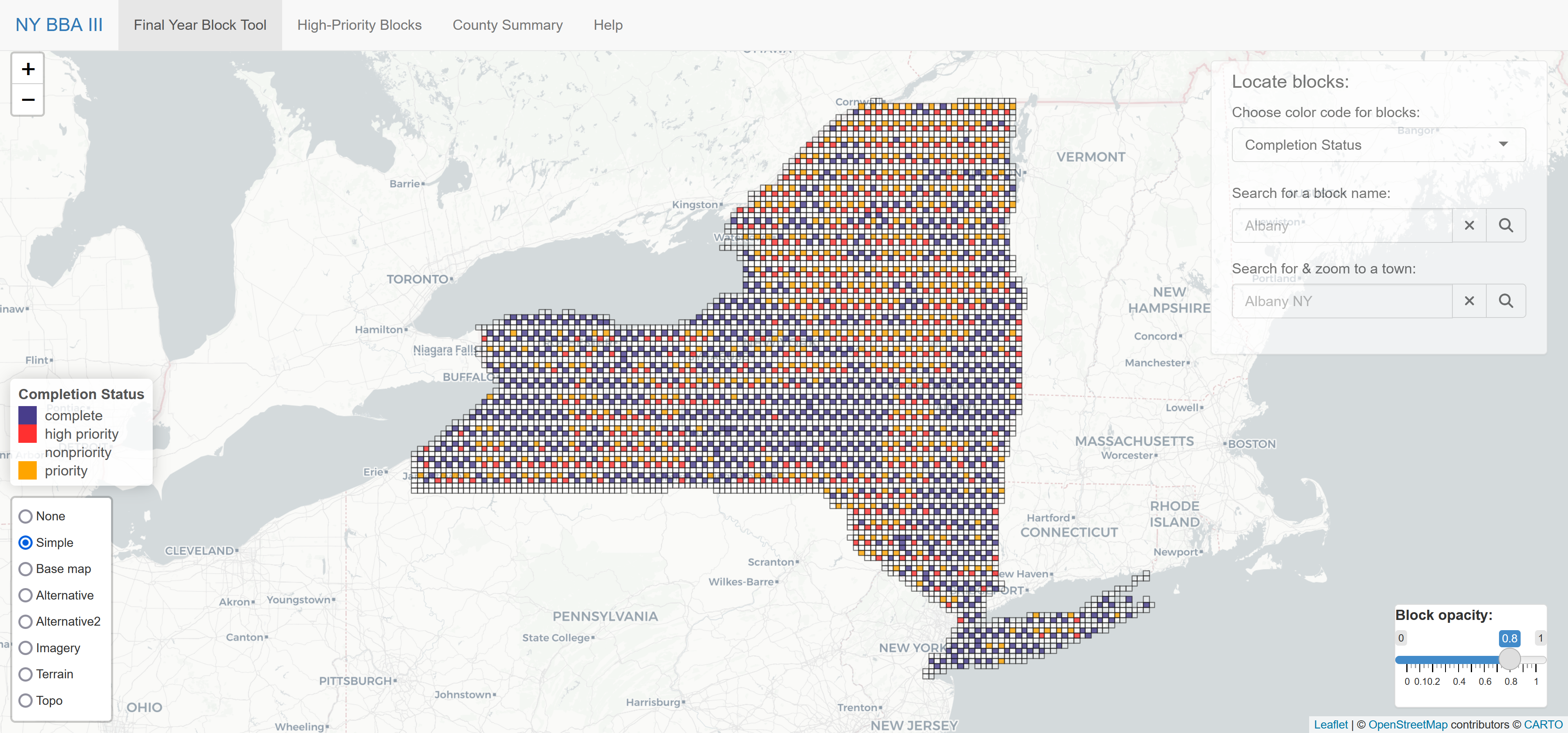
Weekly Q&A Sessions
We’ve lined up weekly Q&A sessions every Wednesday at 7-8 pm from now through Aug 14. If you have any atlas-related questions over the final season, we are here to help!
We’ve lined up weekly Q&A sessions every Wednesday at 7-8 pm from now through Aug 14. If you have any atlas-related questions over the final season, we are here to help!
The Big Atlas Weekend is back! This exciting annual event is a fun way for birders to document breeding birds and come together as a birding community.
Use the new block tool to help you plan your final year atlasing! Check out the Final Season Block Tool Here are some of the things you can do with the app: Visualize priority status of blocks See at a glance how many hours are remaining in each block Go directly to the Atlas data […]
Red-headed Woodpeckers are scattered across New York with larger populations along the Great Lakes, Finger Lakes, and lower Hudson Valley. Their red-heads and and large white spots on their wings make them hard to mistake when seen.
Rusty Blackbirds prefer to breed in wet areas such as the spruce-sphagnum bogs, swamps, and fens in the Adirondacks. Like most blackbirds, Rusty Blackbirds make a raucous call and song to keep on the listen for while Atlasing in wet areas, especially in the Adirondacks.
Least Bitterns are the smallest member of the heron family. Their diminutive size allows them to move about in dense emergent vegetation, making them hard to see.
Global Big Day is an annual celebration of the birds around you. No matter where you are, join us virtually on 11 May, help celebrate World Migratory Bird Day, and share the birds you find with eBird.
Northern Harriers often choose to breed in large stretches of undisturbed grasslands and wetlands across the state. They will use meadows, old farm fields, pastures, and both freshwater and brackish marshes during the breeding season where they can be seen hunting for small rodents and birds.
Upland Sandpipers only spend a few months in NY, but their spectacular singing and flight display is not to be missed. Learn more about how to find this disappearing grassland bird.
eBird, Merlin, and the Macaulay Library are taking flight to new servers! As we finish this transition, it will be necessary to take our database offline for a period of 24-48 hours starting 19 March.








